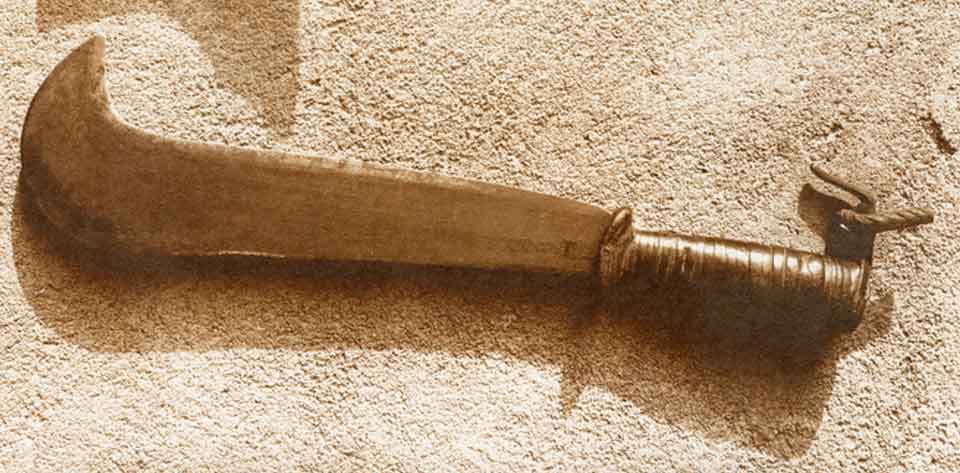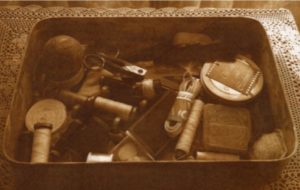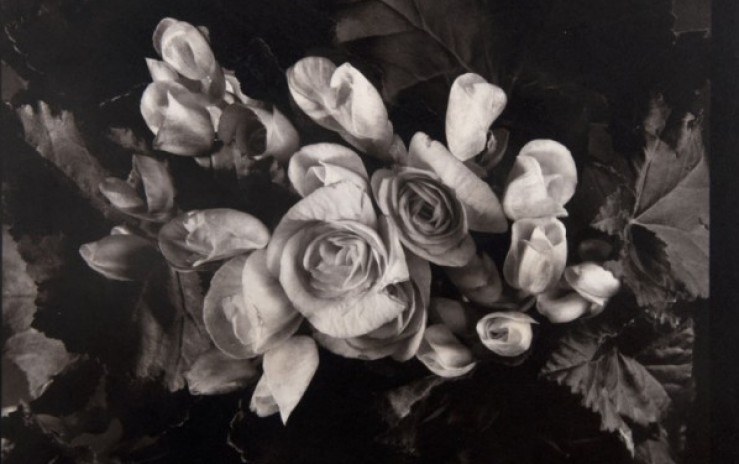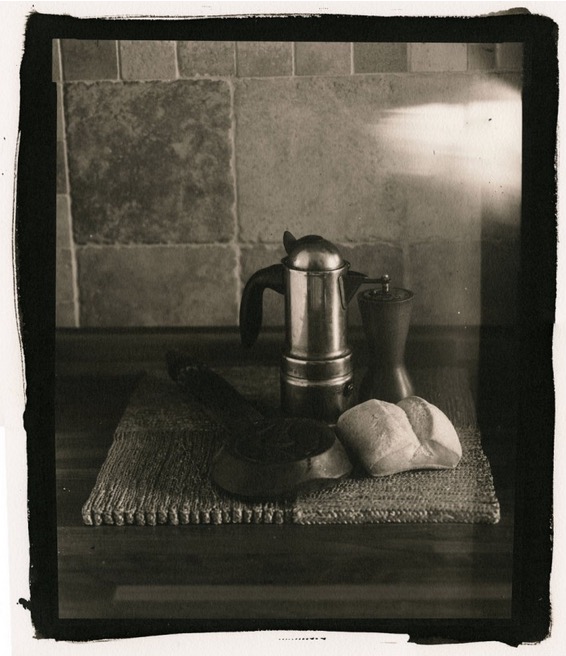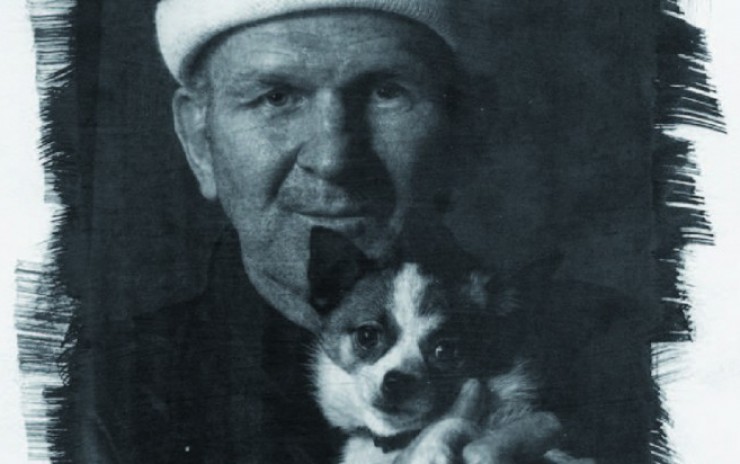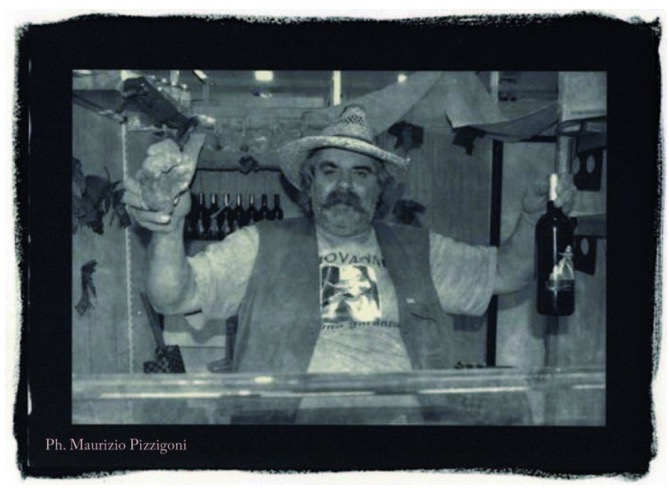
Ziatype
Ziatype Beginner kit (Kit09)
Kit contents
Sensitizing:
Ammonium Ferric Oxalate sol.A 25ml
Ammonium Ferric Oxalate contrast sol.B 25ml
Lithium Chloropalladate sol.C 25ml
Warm hues toning
Sodium Tungstate 25ml
Equipment
Plastic pipettes 4 pieces
Brush 40mm goat hair 1
Paper Mylar mm 0,125 form. A4 2
Development
Citric Acid 300gr
Clearing agent
Sodium Sulfite 300gr
Instruction set 1
Procedure
Prepare the sensitized paper with even quantity of sol.A and sol.C.
The contrast in the end result can be controlled and tuned by replacing sol.A with an even quantity of solution B.
The use of only sol.A and sol.C will result in lesser contrast. By properly mixing sol.A and sol.B the contrast can be adjusted till the desired effect is obtained.
The relation A+B and C must be 1:1.
To prepare a print 13x18cm with an average contrast, mix 5 drops of sol.A and 3 drops of sol.B, then add 8 drops of sol.C. Should you need a higher contrast, you can modify the proportion of A and B. For example 6 parts of A + 2 parts of B to have a lower contrast.
After preparing and mixing well the different solutions, you can prepare the paper with the usual procedure: brush or rod.
Coating with too much sensitizer does not present an advantage, on the contrary it works as a mask on the lower layer which will not be properly exposed and after the wash it will result in white grains.
After the drying, which is faster if you use a hairdryer (only cold air), comes the exposure to UV light for the necessary time.
Be aware that if the paper is too dry this could cause the formation of little white blurred spots.
The paper should be at 60% humidity and to satisfy this parameter you need a humidifier. As an alternative, you could also use some tricks, as for example humidify the back of the sensitized paper with a lightly wet brush. Another option is to apply a lightly wet sheet on the back of the paper during exposure.
To avoid any damage on the negative, do as follows:
insert the sensitized paper between two transparent Mylar sheets, adding a wet sheet on the back of the paper and putting the negative on top of it with the printed side facing the sandwich.
It is good practice to make a few standard tests, the first time, to establish an exposure time range.
Normally it takes several minutes, up to 10-15 depending on the maximum potency of the light equipment.
Sensitized paper can also be used after several hours; obviously it must be stored away from light and then be humidified again.
The negatives must show good contrasts, like the ones used for platinum/palladium.
After the exposure, the print is immersed in acidified water with 3% citric acid during 5 minutes, then washed for 10-15 minutes and dried. Some paper might look a little yellowish after the bath; you can solve this problem with a 1.5% sulfite bath, then again wash and dry.
The tests performed with Cot320 did not show such phenomenon.
You can modify the final tone of the print and create warmer tones by replacing some of the sol. with sodium tungstate solution. The addition of tungstate produces a little precipitation that dissolves with a quick shake.
Tungstate is added after the lithium palladium is mixed, the precipitate will take longer to dissolve.
By replacing some drops of sol.C with some of sodium tungstate (always with a 1:1 relation) you shift the tonality towards warmer colors like brown or sepia.
Different tonality range, grey, blue or purple, can be obtained by replacing part of the lithium/palladium solution with a gold 5% trichlorade solution. The final color is also affected by the choice of the paper and by the humidity in the air.
Chemical products used in this procedure are to be considered toxic and non-suitable for human or animal consumption. As a user you must be aware of the risks and take care to protect the environment. Never dispose of chemical waste in a domestic sewage or with common garbage. For a correct disposal please see your local disposal laws.
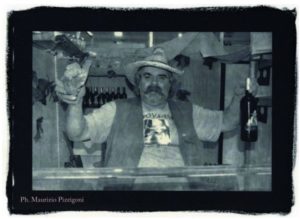
Ziatype beginners kit
Ziatype Ziatype Beginner kit (Kit09) Kit contents Sensitizing: Ammonium Ferric Oxalate sol.A 25ml Ammonium Ferric Oxalate contrast sol.B

Wet plate Collodion-formulating Poe Boy
Collodion process-Poe Boy formula (No ether/No cadmium) The procedure for the collodion “poe boy”, or “poor boy” as some say, is interesting for it does

Wet plate Collodion-Old Work-Horse process
Old Work-Horse for positive process 1°- Collodion solution (part A) pour 220 ml plain collodion into a 500 ml beaker slowly, add 140 ml ether


